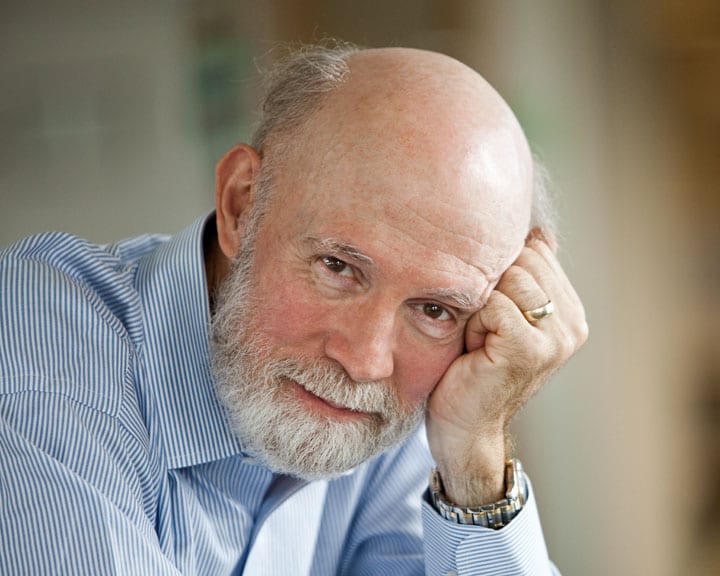
Jim Womack on what influences our ability to sustain change
WOMACK’S YOKOTEN – The author visits a company that has sustained lean for a decade. In trying to understand how they did it, he finds how fundamentally the management system has changed.
Words: Jim Womack, Founder and Senior Advisor, Lean Enterprise Institute
Last September, I attended the 25th anniversary celebration of the Toyota Supplier Support Center, now known as the Toyota Production System Support Center (but keeping the old acronym of TSSC). It was a grand affair at the new Toyota North American headquarters in Plano, Texas, with attendees including the Chairman of Toyota, Takeshi Uchiyamada (the first chief engineer for the Prius), and Nampachi Hayashi, the fabled and ferocious former head of Toyota’s Operations Management Consulting group in Japan from which TSSC is descended.
A number of TSSC’s client firms were represented, selected from the 338 firms TSSC had worked with up to that time. And there were many good stories to tell all around. However, I noted that while practically every model line project TSSC had launched at client firms had produced impressive results, the number of firms that had been able to spread their learning (yokoten) from this experiment across their entire organization, vertically to the top as well as horizontally from end to end, was much smaller. And the number of firms that had been able to spread and sustain their learning across the entire enterprise and continue to learn over many years was smaller still. Indeed, very small.
So I made a note to myself that I would try to visit some of the firms where lean thinking has endured for a decade or more and ask why. I recently started my journey at the Deublin Company in Waukagen, Illinois. Deublin’s 600 employees manufacture rotating unions for industrial machinery (which are really complicated to explain but you can Google them) at facilities in the US, Germany, Italy, Brazil, and China.
As I walked through the shop floor, two employees wanted to show me their latest improvements. JR, a team leader for Brassland (the original TSSC model line, for products fabricated mostly from brass) had just completed an exhaustive research project with his team on protective gloves, going far beyond the minimum requirements, to make sure none of the team members are ever cut by the sharp metal objects they manufacture. And Tom in the tool shop wanted to explain his new tool holders to speed up the already short changeovers in the cutting machines.
I was in a hurry, with lots to see, and the challenge was to get them to stop talking. There was always a bit more they wanted to show me and this kind of engagement can’t be faked. But energetic kaizen alone can’t create and sustain a lean transformation. I knew there must be much more.
At the end of my visit, my list of factors making Deublin different from most organizations attempting lean transformations is as follows:
- Clear objective. As President Ron Kelner notes, “We didn’t want to be Toyota but to be the best Deublin we could be.” And that meant learning deeply from interacting with TSSC rather than simply copying tools and going through exercises such as creating a model line.
- Continuity in ownership. Don Deubler, the chairman, is the second generation of family owner over more than 50 years and, at 72, the person making plans for more continuity in the next generation of family ownership. Deublin has grown steadily, sometimes by acquisition, but only at a rate that can sustain the culture.
- Respect for people. The Deubler family takes the long view and has been careful to retain cash from profits in order to sail a steady course through economic downturns and industry disruptions. In the Great Recession in 2009, Deublin lost 60 percent of its sales but kept employees on board. I believe that Deublin’s intent is to be the “lean employer” that I talked about in my April column and many of the employees I met felt that the family owners are truly committed to protecting them as long as they participate energetically in improvement.
- Continuity in management. President Ron Kelner has been in the job for 13 years with perhaps 5 to 7 years to go. In 2009, when we first met, Ron was what I call a “modern manager” with lots of energy to drive the organization through KPIs and ready to give a quick answer for any problem that emerged. However, he soon realized that a different management style was needed to support the new technical methods TSSC was introducing. He sought help from a number of sources, including joining the Executive Learning Group at LEI led by Dave LaHote. Today Ron is a master of A3 analysis and carefully asks questions to his managers rather than giving them answers as he steers a steady course toward Deublin’s North Star.
- A relentless pragmatism and aversion to dogma. The Deublin team has been engaged for 10 years in trying endless experiments – using PDCA in the context of A3 – as they search for better approaches. This has meant looking outside the company but not a slavish adoption of “lean” methods without question. (Indeed, they have even rejected a few suggestions of mine!) The Deublin Peformance System (DPS) that has emerged is unique to the needs of Deublin.
These factors are all important and often lacking in firms I visit. But I believe that the truly critical element of the Deublin transformation has been the effort to transform the management system to develop the capability of every employee. My hypothesis, after listening to shop floor workers, team leaders, mid-level managers, department heads and the President is that Deublin has developed a management system that is actually striving to work in. Everyone gets immediate feedback on performance, help in trying to eliminate struggles with the work, and a role in the improvement of their work. And everyone wants to continue to improve the system.
This thought came into focus as I visited the DPS team room. This team was originally established to assist in the transformation of all of Deublin’s manufacturing operations to model lines with cells rather than the traditional process villages. Once this was done, it continued as a centralized problem-solving team. But it has gradually been transformed to a management and people development activity that teaches line managers how to analyze problems and experiment with solutions. Every new manager entering Deublin has a full-time assignment in the DPS office, learning by doing, as part of their development. And most of the managers present at the start of the lean transformation have been rotated through DPS full-time for extended periods. As Ron notes, “To advance in this company, managers need to go through DPS and the person who takes my place as President will come up through DPS.”
On the next phase of my walk, it was fairly amazing to watch on the shop floor as Rob O’Brien, the Vice President of Sales, took me through the A3 he developed during his six-month assignment in DPS to reduce the response time for andon pulls on the shop floor. Then we went to the Sales Department to look at the boards for daily management of the sales process that Rob is developing with the sales team, based on what he learned in the DPS. When a classic salesman wants to talk about rapid response to the problems of the folks who actually make the product and also wants to talk about improving sales as a rigorous process, you know something fundamental has changed.
It was equally interesting to watch as Anton Petrou, the Vice President of Engineering, showed me at the point of use the project he worked on during his DPS stent to simplify a difficult production process for production associates and to make it much more capable. Then we went to the Engineering Department to look at the boards for daily management of engineering projects, which have been divided into three value streams based on complexity. This on-going project is also based on what he learned in DPS. Again, when a serious product engineer wants to talk about the realities of production and the challenge of re-engineering the engineering process, you know something has shifted.
To sum up: Deublin has endured on the lean journey because the journey feels right and because employees feel they are being treated right by being continuously developed. (And, by the way, the journey has produced brilliant business results.) What more can we in the Lean Community hope for?
THE AUTHOR

Read more


FEATURE – Using data from a recent piece of research on logistics, the author discusses how Lean Thinking contributes to a more efficient and effective way of dealing with problems.


CASE STUDY – Not even a pandemic can prevent a lean organization from learning: this hotel in Tenerife has decided to make the most of its forced closure to review and improve its processes.


CASE STUDY – Clinical trials are known for their rigorous analysis and approval process. The experience of Roche Brasil teaches us what lean and agile thinking can do to speed it up.


CASE STUDY – Manuelita Sugar Mill in Colombia adopted Daily Management to bolster leadership effectiveness and operational outcomes, addressing siloed thinking and communication challenges.

